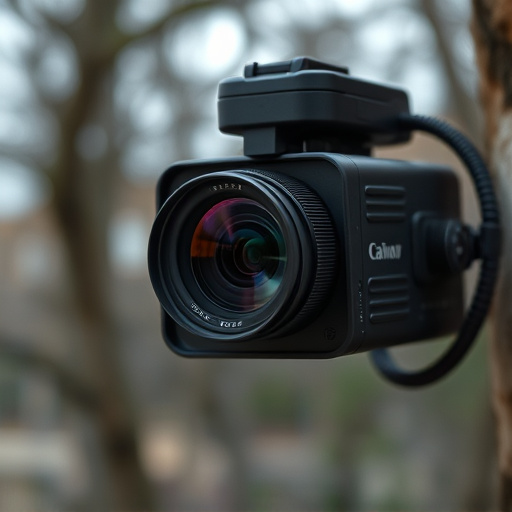When setting up a best indoor spy camera system, prioritize legal and ethical considerations regarding privacy and local regulations. Choose models designed for discreet installation, advanced features like motion detection, and low-light performance. Strategically place cameras in less obvious locations, managing connectivity and power effectively for optimal footage quality without attracting attention. Ensure robust data security through encryption, regular software updates, and role-based access controls to protect user privacy and comply with data protection laws.
“Uncover the secrets of creating a robust and secure best indoor spy camera system with our comprehensive guide. In an era where privacy is paramount, understanding legal boundaries and ethical implications is non-negotiable. This article navigates your journey to selecting the ideal spy cameras tailored to your needs. From designing a discreet network layout to ensuring data security, we delve into essential practices for installing a covert camera network. Discover the key elements that contribute to an effective best indoor spy camera system.”
- Understanding Legal and Ethical Considerations for Indoor Spy Camera Systems
- Selecting the Right Type of Spy Cameras for Your Needs
- Designing a Discreet and Effective Camera Network Layout
- Ensuring Data Security and Privacy with Spy Camera Networks
Understanding Legal and Ethical Considerations for Indoor Spy Camera Systems
When considering the best indoor spy camera system for installation, it’s paramount to navigate a complex web of legal and ethical considerations. The use of covert cameras indoors raises significant privacy concerns, as they capture intimate spaces where individuals expect discretion and seclusion. As such, laws vary across jurisdictions, with many countries having strict regulations regarding surveillance technology, especially in residential or commercial settings.
For instance, many regions require explicit consent from all parties involved for camera installation, especially if the cameras are hidden. Installation without authorization can result in severe legal repercussions, including fines and damage to one’s reputation. Ethical guidelines also emphasize the need for transparent practices, clear communication about surveillance systems, and minimizing intrusion into personal spaces. Thus, understanding local laws and ethical standards is non-negotiable when setting up any indoor spy camera system.
Selecting the Right Type of Spy Cameras for Your Needs
When selecting the right type of spy cameras for your needs, it’s crucial to consider the specific requirements of your space. For instance, if you’re setting up a best indoor spy camera system, choose models designed for clear image quality in low-light conditions and discreet installation. These cameras often feature small, unobtrusive designs that blend seamlessly with your surroundings, ensuring minimal disruption while maximizing surveillance capabilities.
Prioritize features like motion detection, night vision, and remote access to tailor the spy cam network to your exact needs. High-quality indoor cameras may offer advanced functionalities such as two-way audio and integration with smart home systems, enhancing both security and convenience. Remember, the ideal spy camera system should provide comprehensive coverage while aligning with privacy considerations for a balanced approach to security.
Designing a Discreet and Effective Camera Network Layout
When designing a covert camera network, especially for a best indoor spy camera system, discretion is key. Strategically placing cameras in less obvious locations, such as within ceiling lights, electrical outlets, or everyday objects like clocks or smoke detectors, can significantly reduce their visibility. Consider factors like lighting, angle of view, and field of coverage to ensure each camera captures high-quality footage without drawing attention.
A well-designed layout should also prioritize connectivity and power management. Use a combination of wired and wireless cameras, placing them in areas that allow for optimal signal strength and minimal interference. Ensure reliable power supply through POE (Power over Ethernet) or backup batteries to maintain uninterrupted surveillance. By carefully planning these elements, you can create an effective and discreet network that delivers valuable security insights without compromising on quality.
Ensuring Data Security and Privacy with Spy Camera Networks
In the realm of covert camera networks, data security and privacy are paramount. When installing a best indoor spy camera system, it’s crucial to implement robust encryption protocols for all video and audio transmissions to prevent unauthorized access. This ensures that sensitive information captured by the cameras remains secure and protected against malicious actors who might attempt to hack into the network.
Additionally, ensuring user privacy involves adhering to local data protection laws and regulations. Regular updates and patches for camera software can help patch security vulnerabilities, while implementing role-based access controls limits who has permission to view or manage the system. This holistic approach safeguards both the integrity of the collected data and the privacy rights of individuals captured on the cameras’ lenses.
When implementing a best indoor spy camera system, it’s crucial to balance effective surveillance with legal and ethical considerations. By carefully selecting camera types tailored to your needs, designing a discreet network layout, and prioritizing data security and privacy, you can create a robust and legally sound observation framework. Remember that transparency and respect for privacy are paramount, ensuring your system aligns with local regulations while effectively safeguarding your property.
